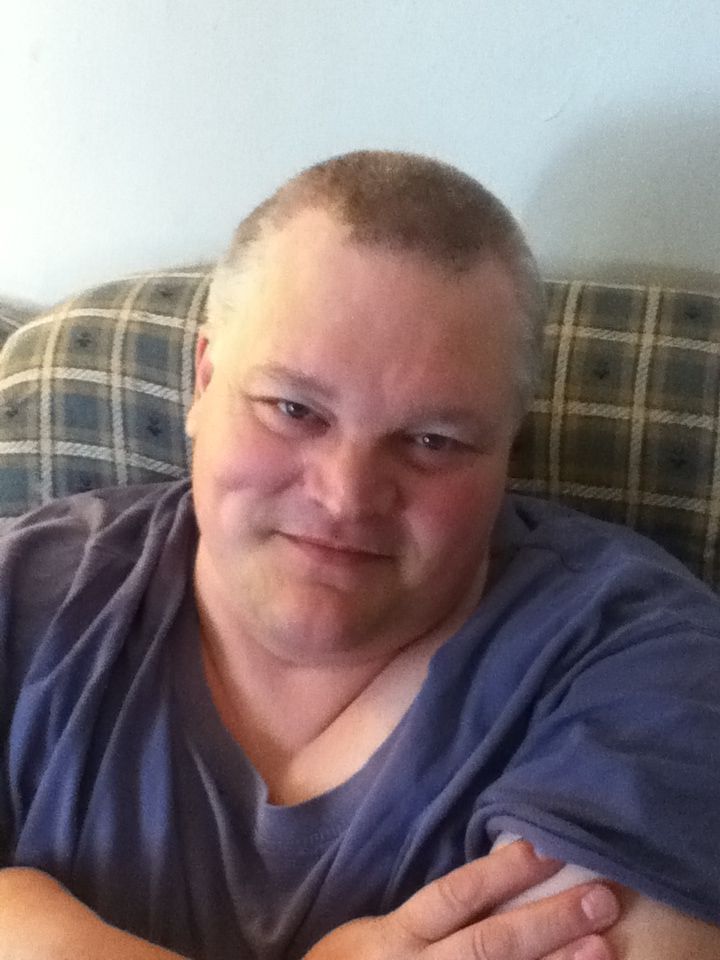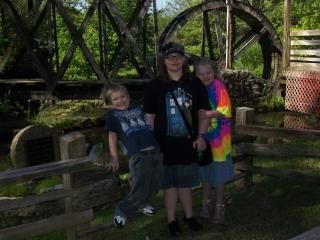***Special thanks to Julie Gwinn, Trade Book Marketing, B&H Publishing Group for sending me a review copy.***
A whisper in my ear: Wake!
Blue. A sea awash with nothing but a drifting bit of down, flotsam on an invisible current. I closed my eyes. Light illuminated the thin tissues of my eyelids.
A bird trilled. Near my ear: the percussive buzz of an insect. Overhead, tree boughs stirred in the warming air.
I lay on a soft bed of herbs and grass that tickled my cheek, my shoulders, and the arch of my foot, whispering sibilant secrets up to the trees.
From here I felt the thrum of the sap in the stemthe pulsing veins of the vine, the beat of my heart in harmony with hundreds more around me, the movement of the earth a thousand miles beneath.
I sighed as one returning to sleep, to retreat to the place I had been before, the realm of silence and blisswherever that is.
Wake!
I opened my eyes again upon the milling blue, saw it spliced by the flight of a bird, chevron in the sky.
This time, the voice came not to my ear, but directly to my stirring mind: Wake!
There was amusement in it.
I knew nothing of where or what I was, did not understand the polyphony around me or the wide expanse like a blue eternity before me.
But I woke and knew I was alive.
A rustle, a groan practically in my ear. I twitched at a stir-ring against my hip. A moment later, a touch drifted across a belly I did not yet know I owned, soft as a leaf skittering along the ground.
A face obscured my vision. I screamed. Not with fearI had no acquaintance with fearnor with startlement because I had been aware of the presence already, but because it was the only statement that came to lips as artless as mine.
The face disappeared and returned, blinking into my own, the blue above captured in twin pools. Then, like a gush of water from a rock, gladness thrilled my heart. But its source was not me.
At last! It came, unspokena different source than the voice beforeand then the words thrust jubilantly to the sky: At last!
He was up on legs like the trunks of sturdy saplings, beating at the earth with his feet. He thumped his chest and shouted to the sun and clapped his hands. At last! He cried, his laughter like warm clay between the toes. He shook his shoulders and stomped the grass, slapping his chest as he shouted again and again. Though I did not understand the utterance, I knew its meaning at once: joy and exultation at something longed for suddenly found.
I tried to mimic his sound; it came out as a squawk and then a panting laugh. Overhead, a lark chattered an extravagant address. I squeaked a shrill reply. The face lowered to mine and the mans arms wrapped, wombtight, around me.
Flesh of my flesh, he whispered, his breath warm against my ear. His fingers drifted from my hair to my body, roaming like the goat on the hills of the sacred mount. I sighed, expelling the last remnants of that first air from my lungsthe last of the breath in them not drawn by me alone.
He was high cheeked, this adam, his lower lip dipping down like a folded leaf that drops sweet water to thirsty mouths. His brow was a hawk, soaring above the high cliffs, his eyes blue lusters beneath the fan of his lashes. But it was his mouth that I always came back to, where my eyes liked best to fasten after taking in the shock of those eyes. Shadow ran along his jaw, like obsidian dust clinging to the curve of it, drawing my eye to the plush flesh of his lips, again, again, again.
He touched my face and traced my mouth. I bit his finger. He gathered my hands and studied them, turning them over and back. He smelled my hair and lingered at my neck and gazed curiously at the rest of me. When he was finished, he began all over again, tasting my cheek and the salt of my neck, tracing the instep of my foot with a fingertip.
Finally, he gathered me up, and my vision tilted to involve an altogether new realm: the earth and my brown legs upon it. I clutched at him. I seemed a giant, towering above the eartha giant as tall as he. My first steps stuttered across the ground as the deer in the hour of its birth, but then I pushed his hands away. My legs, coltish and lean, found their vigor as he urged me, walking far too fast, to keep up. He made for the orchard, and I bolted after him with a surge of strength and another of my squawking sounds. Then we were runningthrough grasses and over fledgling sloes, the dark wool of my hair flying behind me.
We raced across the valley floor and my new world blurred around me: hyssop and poppy, anemone, narcissus, and lily. Roses grew on the foothills amid the caper and myrtle.
A flash beside me: the long-bodied great cat. I slowed, distracted by her fluidity, the smooth curve of her head as she tilted it to my outstretched hand. I fell to the ground, twining my arms around her, fingers sliding along her coat. Her tongue was roughunlike the adamsand she rumbled as she rolled against me.
Far ahead, the adam called. Overhead, a hawk circled for a closer look. The fallow deer at a nearby stream lifted her head.
The adam called again, wordlessly, longing and exuberant. I got up and began to run, the lioness at my heels. I was fastnearly as fast as she. Exhilaration rose from my lungs in quick pants in laughter. Then, with a burst, she was beyond me.
She was gone by the time the adam caught me up in his arms. His hands stroked my back, my hips, my shoulder. I marveled at his skin. How smooth, how very warm it was.
You are magnificent, he said, burying his face against my neck. Ah, Ishawoman, taken from man!
I said nothing; although I understood his meaning, I did not know his words. I knew with certainty and no notion of conceit, though, that he was right.
At the river he showed me how he cupped his hands to drink and then cupped them again for me. I lowered my head and drank as a carp peered baldy from the shallows up at me.
We entered the water. I gasped as it tickled the backs of my knees and hot hairs under my arms, swirling about my waist as though around a staunch rock as our toes skimmed a multitude of pebbles. I wrapped my arms around his shoulders.
All of this: water. He grunted a little bit as he swam toward the middle of the river where it widened into a broad swath across the valley floor. Herethe current.
Water. I understood, in the moment I spoke it, the element in all its formsfrom the lake fed by the river to the high springs that flow from the abyss of the mount. I felt the pull of it as though it had a gravity all its own, as though it could sweep me out to the cold depths of the lake and lull me by the tides of the moon.
From the river I could see the high walls of our cradle: the great southern mount rising to heaven and, to the north, the foothills that became the long spine of a range that arched toward the great lake to the west.
I knew even then that this was a place set apart from the unseen lands to the north, the alluvial plain to the south, the great waters to the east and far to the west.
It was set apart solely because we dwelt in it.
But we were not alone. I could see them after a time, even as we left the river and lay upon its banks. I saw them in sidelong glances when I looked at something else: a sunspot caught in the eye, a ripple in the air, a shock of light where there should be only shadow. And so I knew there were other beings, too.
The adam, who studied me, said nothing. We did not know their names.
The first voice I heard urging me to wake had not been the mans. Now I felt the presence of it near me, closer than the air, than even the adams arms around me.
I returned the mans strange amazement, taken by his smooth, dark skin, the narrowness of his hips, his strange sex. He was warmer than I, as though he had absorbed the heat of the sun, and I laid my cheek against his flat breasts and listened to the changeling beat of his heart. My limbs, so fresh to me, grew heavy. As languor overtook me, I retreated from the sight of my lovely, alien world.
Perhaps in closing my eyes, I would return to the place I had been before.
For the first time since waking, I hoped not.
I slept to the familiar thrum of his heart as insects made sounds like sleepy twitches through the waning day.
When I woke, his cheek was resting against the top of my head. Emotion streamed from his heart, though his lips were silent.
Gratitude.
I am the treasure mined from the rock, the gem prized from the mount.
He stirred only when I did and released me with great reluctance. By then the sun had moved along the length of our valley. My stomach murmured.
He led me to the orchard and fed me the firm flesh of plums, biting carefully around the pits and feeding the pieces to me until juice ran down our chins and bees came to sample it. He kissed my fingers and hands and laid his cheek against my palms.
That evening we lay in a bower of hyssop and rushesa bower, I realized, that he must have made on a day before this one.
A day before I existed.
We observed together the changing sky as it cooled gold and russet and purple, finally anointing the clay earth red.
Taken from me. Flesh of my flesh. At last. I heard the timbre of his voice in my head in my last waking moment. Marvel and wonder were upon his lips as he kissed my closing eyes.
I knew then he would do anything for me.
That night I dreamed of blackness. Black, greater than the depths of the river or the great abyss beneath the lake.
From within that nothingness came a voice that was not a voice, that was neither sound nor word but volition and command and genesis. And from the voice, a word that was no word but the language of power and fruition.
There! A mote sparka light first so small as the tip of a pine needle. It exploded past the periphery of my dreaming vision, obliterating the dark. The heavens were vast in an instant, stretching without cease to the edges of eternity.
I careened past new bodies that tugged me in every direction; even the tiniest particles possessed their own gravity. From each of them came the same concert, that symphony of energy and light.
I came to stand upon the earth. It was a great welter of water, the surface of it ablaze with the refracted light of heavens upon heavens. It shook my every fiber, like a string that is plucked and allowed to resonate forever.
I was galvanized, made anew, thrumming that inaugural sound: the yawning of eternity.
Amidst it all came the unmistakable command:
Wake!
This was a much different read than I am used to in regards to Christian fiction and Biblical focused stories. I must say I made it half way through the book but I couldn’t get further than that. As a conservative Christian who believes in the literal Creation story it seems that the author has taken liberties with it that struck me as odd. While I know that Adam and Eve probably did in all likelihood enjoy a physical relationship as man and wife there is nothing in the Bible that would suggest it until after they were banned from Eden. I felt some of the descriptions while trying to be discreet were blatant in the suggestive nature.
I know the author means well and the reader can tell she put forth much effort but I just couldn’t finish this book however well written it was. I will say that it did keep the attention even if I couldn’t finish it this book is one that can easily draw the reader in.


















